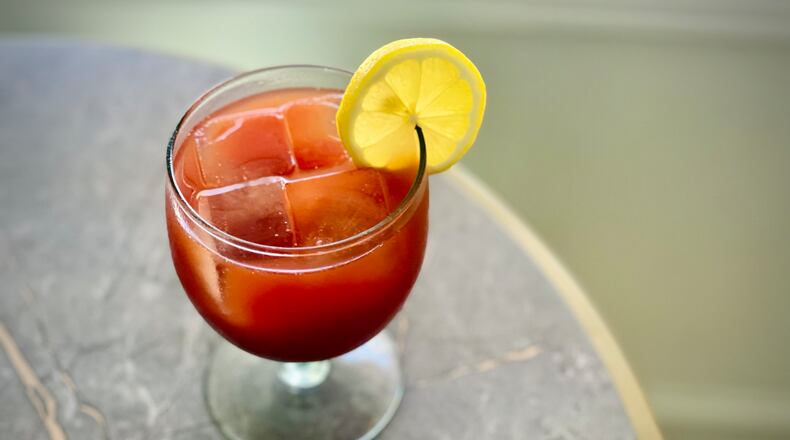Before the bacon or shrimp or even cheeseburger garnish, there was simply a bloody mary. And, before the gazpacho-level thickness of today’s brunch standard, there was a morning pick-me-up of vodka and tomato juice.
In the early 1920s, canned tomato juice was strained and consumed as a hangover cure. It didn’t take long for the speakeasies of Prohibition to take that “cure” and mix it with gin or other spirits — the idea being the best cure is hair-of-the-dog.
George Jessel and Fernand “Pete” Petiot both claimed to have invented the bloody mary sometime between the late 1920s and mid-1930s.
Jessel was a well-known entertainer, and Petiot was a bartender at Harry’s New York Bar in Paris, as well as the St. Regis Hotel in New York City. He claimed to have invented the drink at both bars. At the St. Regis’ King Cole Bar, Petiot changed the name of the cocktail to red snapper, because bloody mary was deemed too vulgar. The moniker didn’t stick and, nowadays, a red snapper refers to a bloody mary made with gin.
We became aware of Petiot when a couple of regulars at our former Atlanta bar, H. Harper Station, returned from a Paris trip and brought us a copy of “Harry’s ABC of Mixing Cocktails,” by Harry MacElhone of Harry’s New York Bar. They requested bloody marys in the style they had sipped in Paris (as outlined in the book). This was very different from the thick version we had been making for Sunday brunch, which was full of ground San Marzano tomatoes, freshly grated horseradish and celery salt. The resulting cocktail was brighter and thinner.
The other significant difference is the ratio of vodka to tomato juice. A July 1964 New Yorker article quoted Petiot as using “two ounces of vodka and two ounces of thick tomato juice.” This equal ratio is much different than the modern proportions used at most restaurants and bars, where the drinks are two-to-one tomato to vodka, or even three-to-one.
An additional step we take, in order to make a bloody mary that is a fine aperitif cocktail, is using quality tomato juice, such as the R.W. Knudsen organic brand. We then run it through a small conical strainer, normally used for double-straining cocktails.
Harry’s Bloody Mary
— Adapted by Jerry and Krista Slater
The Slaters are beverage industry veterans and the proprietors of the Expat, Slater’s Steakhouse and the Lark Winespace in Athens.
Sign up for the AJC Food and Dining Newsletter
Read more stories like this by liking Atlanta Restaurant Scene on Facebook, following @ATLDiningNews on Twitter and @ajcdining on Instagram.
About the Author
The Latest
Featured


